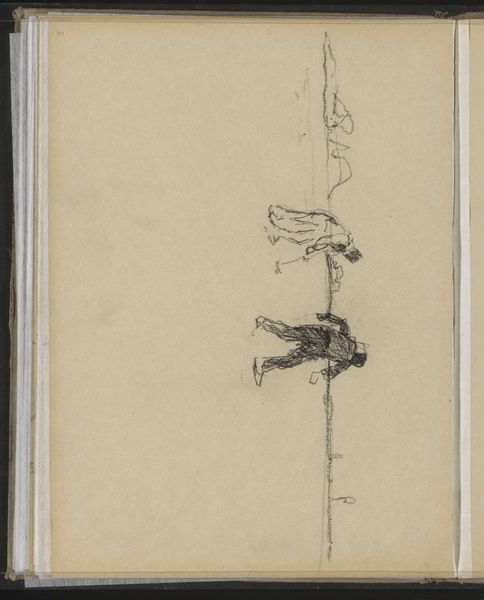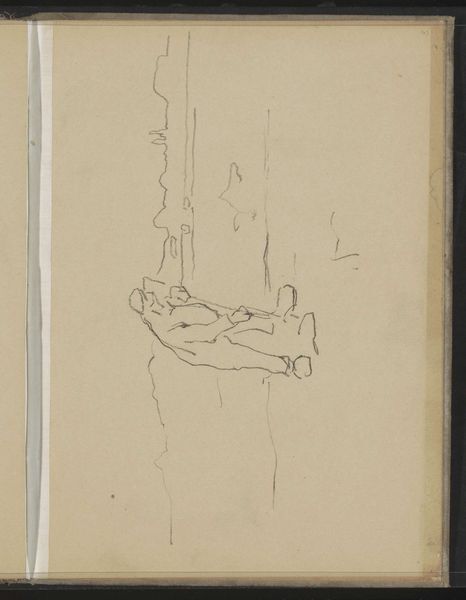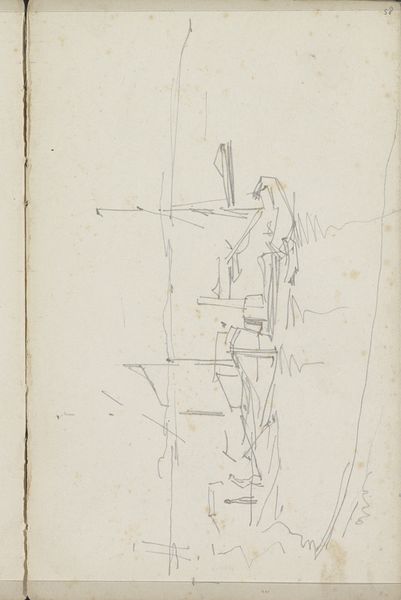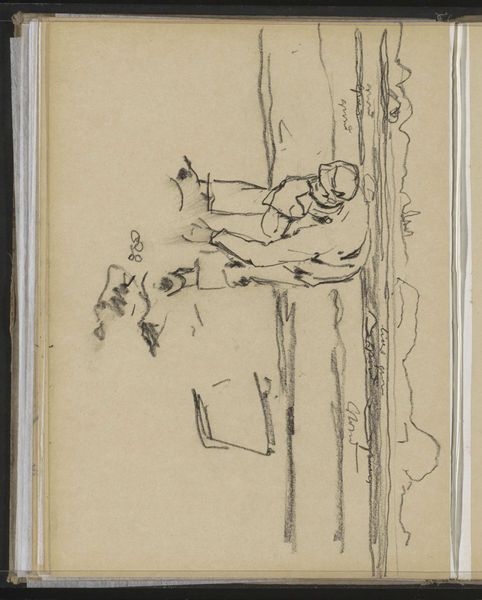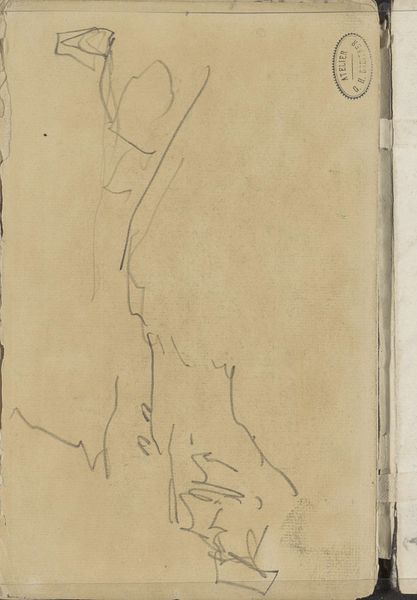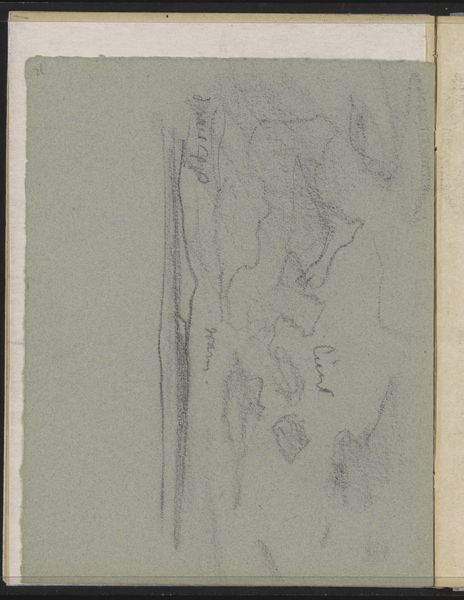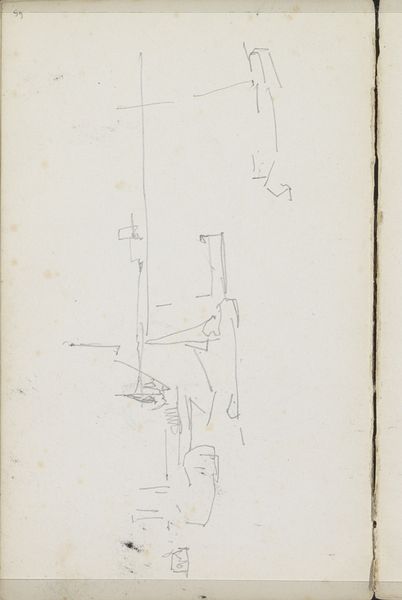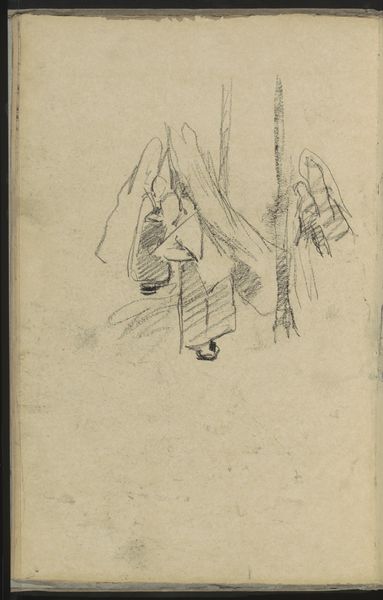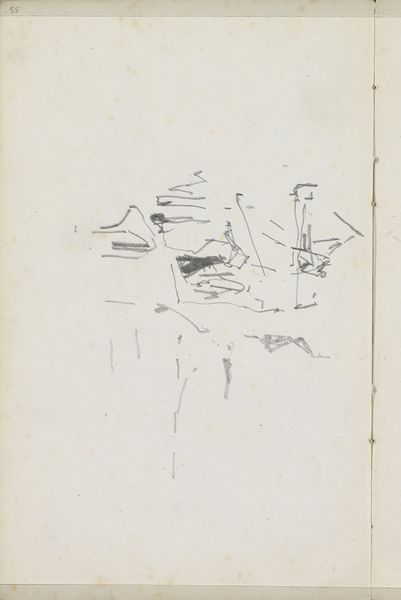
Copyright: Rijks Museum: Open Domain
Editor: This is "Figures Working in the Fields" by Willem Witsen, likely created between 1893 and 1897. It’s a drawing using pencil or pen. I'm struck by the raw simplicity and the visible, almost frantic, energy of the lines. What formal elements stand out to you in this sketch? Curator: I notice the composition relies heavily on line. Notice the skeletal nature of each stroke, how it captures form, movement, and even atmosphere with remarkable efficiency. The linear structures imply forms with an acute awareness of their place. Where do you see implied shapes taking precedence over delineated boundaries? Editor: I think I see that mostly in the figures themselves, they almost emerge from the page instead of being fully defined by lines. I guess the negative space becomes as important as the drawn lines. Curator: Precisely! Consider, too, how the artist utilizes this limited medium. The structural economy and precise arrangement offer us access into the construction of form. Do you agree this aesthetic can itself communicate volumes regarding work, rest, the fields, and perhaps even late 19th-century anxieties about encroaching industrialization? Editor: I do. By leaving out a lot of details, the viewer almost is invited to construct the landscape in their mind. This would make the artwork more accessible for the public to engage and have personal experiences. I see how it emphasizes those ideas. Curator: Exactly. Focusing on how line operates to construct a narrative space, beyond representing figures, is revealing. The figures may appear diminutive or obscured; this might emphasize not the individual experience of labor, but the idea or symbol of labor. This has truly enhanced my understanding. Editor: I see what you mean. Looking closely at the structural framework and arrangement of simple elements certainly unlocks deeper perspectives on the theme.
Comments
No comments
Be the first to comment and join the conversation on the ultimate creative platform.

